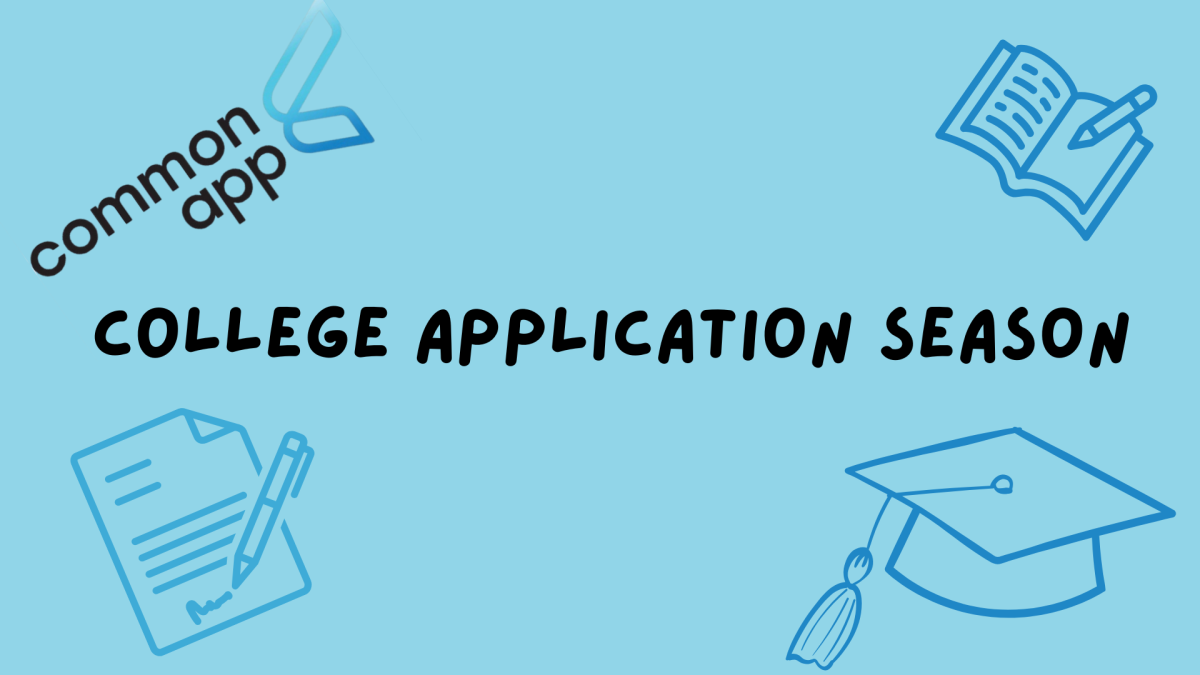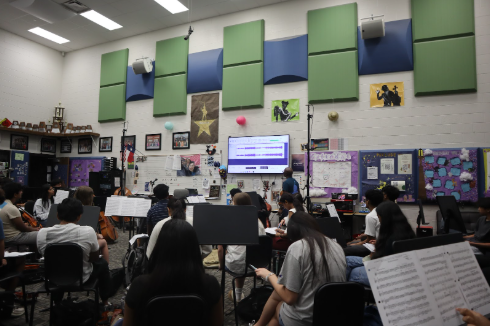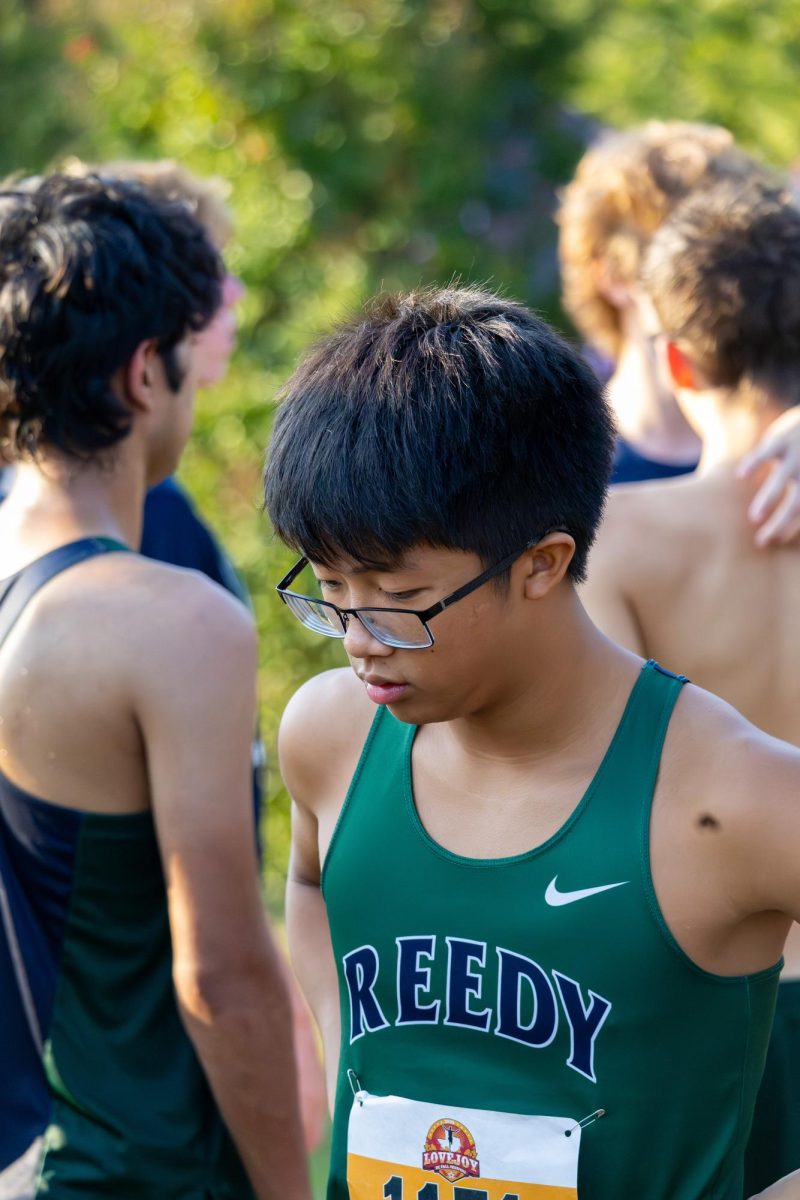The street was coated in milky white as myriad snowflakes glided down and covered the world with an unstepped layer of snow. Roads were cold in ice as the somber winter breeze whispered past the sleeping tree leaves.
It was the scene of Jan. 9 and Jan. 10 when the snow storm covered Frisco and halted the school for a weather emergency. When the students returned to school on Jan. 13, the snow had already melted away, but the different experiences of students, teachers, school administrators, and other members of the school were left even after the snow.
School Administrators
When students hear that the principal and assistant principals watch over the school, they may not take it literally. But behind the scenes, principals and assistant principals actually do watch school from above with satellite imagery to ensure the weather conditions are safe.
According to associate principal Bradley Bailey, principals and assistant principals are trained multiple times a year on reading weather forecasts and satellite imagery.
“It’s fun how many unique areas of expertise you develop when you get into school leadership,” Bailey said.
A number of factors are considered when closing or delaying Frisco ISD campuses, including the safety of students, the ability of Frisco ISD buses to safely transport students, the potential for workday disruptions related to last-minute child care arrangements, and closure decisions by adjacent school districts, according to the Frisco ISD website.
Administrative process of weather emergencies is different if an emergency happens during the school hours. In this case, school administrators will make decisions instead of the district.
“As an assistant principal, this role responds to weather emergencies during the school day,” assistant principal Cody Spohn said. “For example if a storm system begins to work its way towards our school then myself and other admin will monitor the storm’s activity and severity to determine what safety protocols need to be taken. For events that happen outside of school hours such as the recent snow storm that moved in, the call to cancel school is made at the district level.”
School closure does not mean a full holiday for principals and assistant principals; they would still have responsibilities for the school system.
“After ensuring that all staff and student notifications have been successfully made, we then review extracurricular activities that are either that day or the following day,” Spohn said. “Once that is complete, I spend the day with my family enjoying the extra time we get together. This year we spent that time baking cookies and building snowmen in the yard. I always enjoy a good snow day.”
Teachers
While teachers do not go to school during weather emergencies, they may need to adjust their lesson plans to make up for the school closure.
“We had to adjust our schedule,” Sociology and AP Human Geography teacher Brandon Cowart said. “For instance, we missed both A and B days, so I had to push back some planned assessments. Specifically, we had an AOL [Assessment of Learning] scheduled on one of the snow days, so we just moved it to the next class period.”
Each teacher may have different ways of adjusting their schedules. For Cowart, he made extra “buffer days” for his classes to make up in case of potential disruptions. But if they spend all their buffer days, he will need to work further to condense the schedule.
“That might mean covering two modules in one class period instead of one, ensuring we address all the learning targets,” Cowart said.
While teachers may need to adjust their schedules, Cowart said that the closure has positively impacted his students.
“The students got a couple of extra days off, which might have helped boost their spirits and excitement to return to school after a break,” Cowart said. “Unexpected days off can be refreshing and give students a bit of a mental reset, which can contribute to a better classroom environment.”
Students
Some extracurriculars were impacted by the school closure. For instance, Distributive Education Clubs of America had a competition on Monday Jan. 13, allowing its members to further prepare for the competition during the days with school closure.
“I also had a DECA competition a couple of days later, so I spent some time practicing with my teammates,” club member Adithi Nemalikanti said. “Since we couldn’t meet in person because of the snow, we just FaceTimed and practiced our presentation together that way.”
Some students were affected in more than one way by the snow.
“It positively affected me because I was able to catch up on all my work and spend time with my family in the snow,” junior Katherine Yoon said. “But it negatively affected me because it disrupted my schedule—especially my sleep schedule.”
Many students enjoyed the school closure as well. For instance, many students spent time building snowmen during the snow.
Senior Dalton Hardaway said that his snowman was about three and a half feet tall. He used twigs for hair and large sticks for the arms. He made little holes to draw eyes, nose, and a mouth.
“I really enjoyed it,” Hardaway said. “I hope we have another snow day soon so I can build another snowman.”











